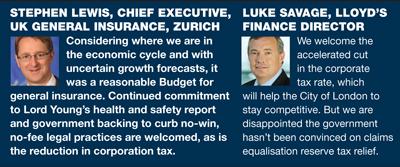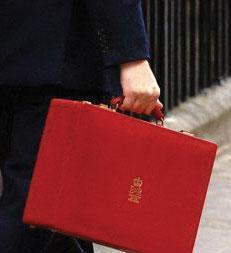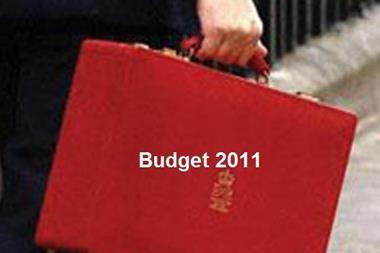Industry verdicts on the 2011 Budget
JACKSON REVIEW
Osborne used his Budget speech to flag up the next steps in the government’s drive to reform civil litigation costs. He told the House of Commons that the activities of no-win, no-fee lawyers would be restricted. He also confirmed that the government would implement Lord Young’s review of health and safety, which set out a range of proposals to tackle the UK’s so-called compensation culture. Both moves were painted as part of a wider economic growth drive to cut red tape on businesses. The continued evidence of top-level government commitment to cut civil legal costs, confirmed by this week’s moves on the Jackson Review package, were welcomed by Ageas chief executive Barry Smith as good for both the industry and consumers.
Industry verdict: 5
PLANNING
It was announced that planning rules for new developments would be relaxed in a bid to kick-start the construction industry. Under the government’s proposals, councils’ default position should be to give permission for schemes. ABI director of general insurance and health Nick Starling has raised concerns that the new rules will make it harder for councils to block developments in high flood risk areas. He said: “Planning, development and building systems all have a role to play in minimising flood risk, and decisions must take account of proper flood risk management issues.”
Industry verdict: 1
STOP LOSS RATIOS
The government proposed legislation to bring the timing of tax deductions on outgoing reinsurance premiums into line with the Lloyd’s three-year accounting system. Under three-year accounting, underwriting years remain open for 36 months to allow claims to develop and are not accounted for until closure. However, Lloyd’s insurers can currently get tax relief on premiums they pay for reinsurance of these years when they pay them. The change would be a double blow for Lloyd’s insurers because not only would they have to wait for their tax deduction, but the deduction would be made at the new lower rates. The upside is that the market knew that HM Revenue & Customs had changed its guidance in 2009 to reflect its intention to align the tax deduction with three-year accounting.
Industry verdict: 2

CLAIMS EQUALISATION RESERVES
The government announced that it was minded to maintain existing tax relief on claims equalisation reserves if the industry could present a good case for it. These reserves are used by insurers, particularly those dealing with unpredictable risks, to cushion against large losses in bad years. As, according to KPMG, UK insurers’ equalisation reserves stood at £2bn in 2008, relief on these reserves saves insurers more than £500m a year in corporation tax. But under Solvency II, equalisation reserves will no longer be recognised in companies’ accounts or for regulatory purposes, placing their tax deductibility under threat. The HMRC has proposed two solutions: to maintain the status quo by allowing insurers continued relief for an equalisation reserve; or to spread any payments due to the HMRC on the reserves over six years, thus smoothing the impact on insurers’ tax bills.
Industry verdict: 3
CORPORATION TAX
The Budget accelerated progress on the drive to cut corporation tax, with the headline rate due to come down from 28% to 26% in April. But, for insurers, of more significance was the announcement on the taxation of companies’ foreign profits. The upcoming Finance Bill will include measures to exempt foreign branches of UK companies from British rates of corporation tax. Such a move would be particularly significant for insurers because, under Solvency II, multinationals organised under branch structures face bigger tax bills than those with subsidiaries. But for those UK-based insurers that have subsidiaries, there was good news too. Draft legislation to establish new controlled foreign corporation rules is due this autumn and will be taken forward in the post-2012 Budget Finance Bill. As a result of the changes, subsidiaries’ earning will be subject to corporation tax of 5.75% by 2014.
Industry verdict: 4

Hosted by comedian and actor Tom Allen, 34 Gold, 23 Silver and 22 Bronze awards were handed out across an amazing 34 categories recognising brilliance and innovation right across the breadth of UK general insurance.














































No comments yet